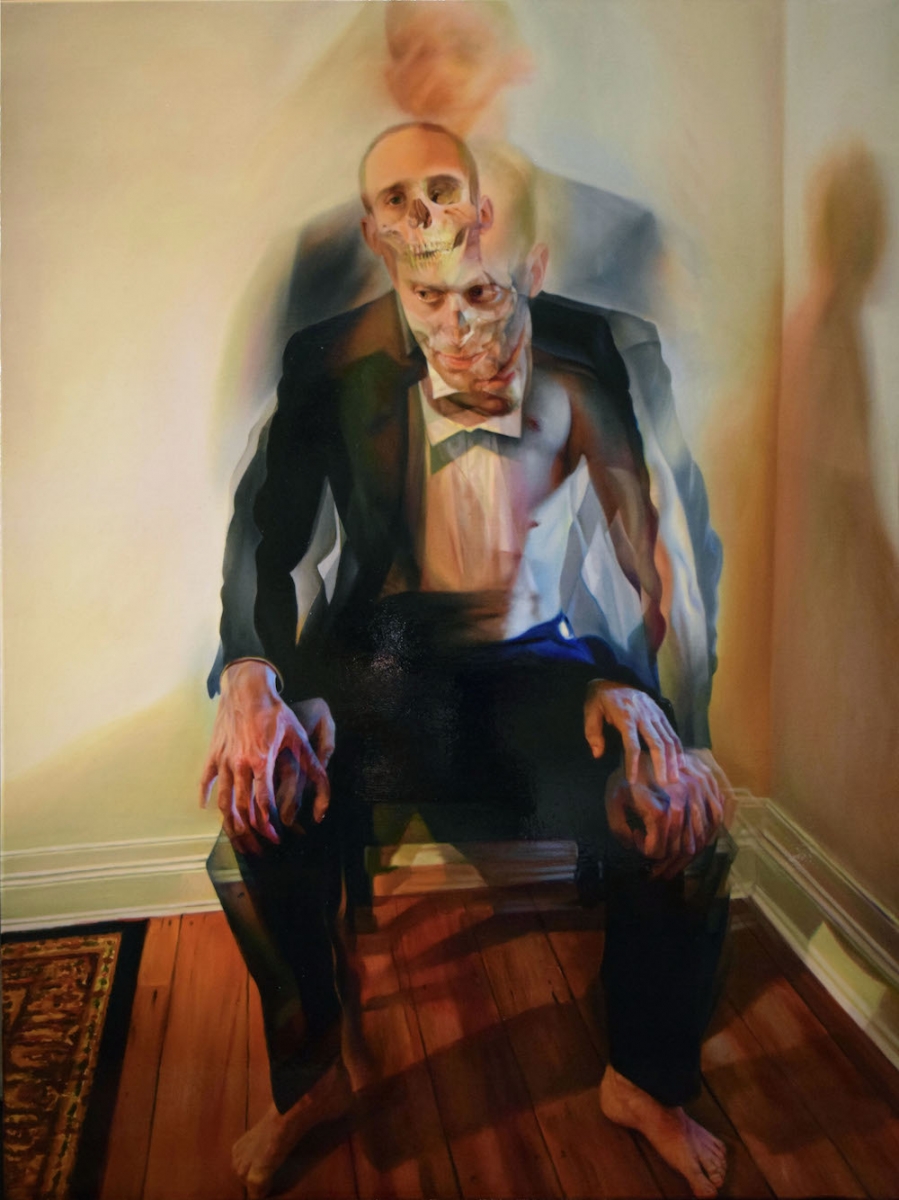The concert pianist is the subject of one of the entries in this year’s Archibald Prize.
Among the hundreds of entries in this year’s Archibald Prize is a dark, brooding portrait of concert pianist Simon Tedeschi, painted by Loribelle Spirovski – who happens to be his partner.

Tedeschi has form when it comes to Australia’s most popular prize for portraiture, held annually at the Art Gallery of New South Wales. In 2002, he was the subject of Cherry Hood’s Archibald-winning portrait: a watercolour that depicted the then cherubic looking 20-year old with a bare chest and piercing blue eyes.
Spirovski’s painting is a deeper, darker, multi-layered work featuring a series of superimposed manifestations of the musician in a suit, including a powerful memento mori reference in the hollowed eye and disappearing flesh of one of the heads. There is also the glimpse of a bare chest but Tedeschi says that it is not a reference to Hood’s portrait. “It is more of a nod to a thematic constant in Loribelle’s work, which explores the fragility of people who are or who have been close to her and it is sort of tangentially related to previous works that she did in the Memento Mori series.”
Born in Manila to a Filipino mother and Serbian father, Spirovski came to Australia at age eight. Since graduating from the College of Fine Arts in Sydney in 2012, her work has focussed primarily on portraiture. It was through her Memento Mori paintings, which Tedeschi much admired, that the artist and musician met. “The series dealt with anxiety and depression in young people. [It] resonated with him on a very personal level and his portrait was to be the last in the series,” says Spirovski. “It wasn’t until later that I decided to create a separate portrait of him for the Archibald, feeling that it wouldn’t do him justice to be painted as part of a series of small paintings.”
The composition for the oil on canvas formed in Spirovski’s mind during a trip to Canberra early this year when Tedeschi played Mussorgsky’s Pictures at an Exhibition at the National Portrait Gallery. “I told him that I wanted to paint him just before he was to walk on stage for a performance and that I saw him as a phoenix, rising from the flames. In the portrait I wanted to convey all the emotions he feels when he performs: the fear, the anxiety, the drive, the anticipation, the ecstasy,” she says.
Tedeschi introduced her to the music of Messiaen, Scriabin and Shostakovich – “particularly late Shostakovich, which is insanely dark,” he says – which she listened to while painting. Entitled Vers la flamme (Toward the flame), the portrait takes its name from one of Alexander Scriabin’s last pieces for piano, composed in 1914 a year before he died. With its simple melody but unusual, restless harmonics, it builds and builds to an ecstatic, fiery crescendo.
Tedeschi professes himself “absolutely enamoured” with the portrait. “Loribelle obviously knows me in a way that is deeper than anyone, so I think this painting has a real emotional truth to it. Certainly in my mind, both as the subject and an observer, it is very much like a phoenix rising from the ashes. There’s a sense of pain and pleasure to it, a sense of ecstasy,” he says. “Loribelle is not a religious person and nor am I but it has a mystical sense of the divine to it and I think it really captures both surreal and photorealist qualities which you don’t often see together in the same frame.”
The finalists of the Archibald Prize as well as the Wynne and Sulman Prizes will be announced on July 7 and the winners revealed on July 15











Comments
Log in to join the conversation.